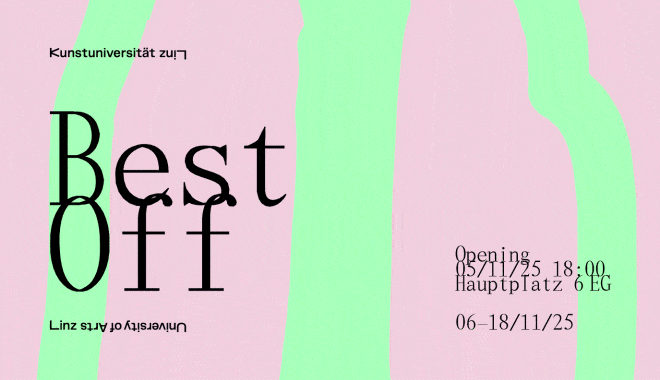
I would like to use the opportunity, now that we talk about your newest performance Jealousy, to also talk about your beginnings. I think it’s interesting to have a picture of how everything started for you. What was the jump you took to start choreography?
First, I did other things. I studied philosophy in Vienna, and I finished it. But I was always dancing alongside my studies and alongside any other work I did. I was also writing film reviews for FALTER. So I did many different things. And then, after I had finished my philosophy studies, I went to Amsterdam, to the School for New Dance Development. And so I thought, I’ll do what I finally want to do, what I always wanted to do, which is dance and choreography education.
We know that nowadays, there’s a lot of initiative when it comes to dance, specifically referring to contemporary dance. It’s not only that there are a lot of programs – ballet or opera, and also many institutional formats. But there’s also a lot of freedom, I feel, when it comes to the contemporary scene in Vienna. How was that moment like, the dance and choreography scene in Vienna at the time, in the late 80s?
ImpulsTanz existed already then; it’s more than forty years old. But Tanzquartier did not exist yet. So there was a free scene in Vienna, and this free scene fought for Tanzquartier. So actually, for almost ten years or so, we discussed among the scene, but also with politicians and so on. And then finally, in 2001, Tanzquartier was opened in MuseumsQuartier.
Of course, the scene was much smaller back then in the 80s and 90s. We had no contemporary dance education or formation in Vienna; most of the choreographers went abroad, like me, who went to Amsterdam, and others went to Paris, Brussels, or London.
And then when we came back, we came back with different experiences. I think that has the advantage that there’s a big variety. So the scene in Vienna is quite diverse, compared to others, because of these different inputs coming from different places.
What would you say was the point where you said, “Okay, now I take it seriously, this is where I want to go full-time in choreography”? Was there a project that marked that moment?
When I was in Amsterdam, I did it in jumps. First, for two years, I wanted to see if this is really what I wanted to do. And then I set another goal for the next three years, to be able to make it as a choreographer. And as it all went along…

How do you build this trust and continuity in the rehearsals and the program? Also, for Jealousy, there are five performers next to you in the project. Can we talk about how you built the trust with them?
The trust is built through the continuity, through rehearsals, where we talk about everything that comes up. Dance itself is a physical work, and this physical work implies a closeness in how you work together. I think the main thing is that we openly discuss all the aspects.
At the same time, there’s this kind of marker for being able to let go and trust the process of the situation, or am I romanticizing a little bit?
Yes, I would say that trusting the process is important. And to trust the process is also a matter of experience. You know, when you’ve done this many years and have had many processes, there’s always going to be a little crisis somewhere along the way. And you learn that you can work through it, it always works out, in one way or another. It depends a bit on the project, of course, not every project is the same. But in terms of trust—yes, it is about being together.
And how about the process behind Jealousy? What was the starting point? How long did you prepare for it? And how did you choose the ensemble?
The last project we did was last year at ImPulsTanz, it was called polymono. And that was a big experiment, in what I would even call a new genre. Because what we did is, we were very close to the audience. It was not a situation where we performed something frontal, but rather we were amongst the audience. We also interacted with them, and we included them.
There was a kind of route to this, because in other projects there had already been some element of audience interaction. I had it before, but step by step it got more and more important—until it became the most important thing.
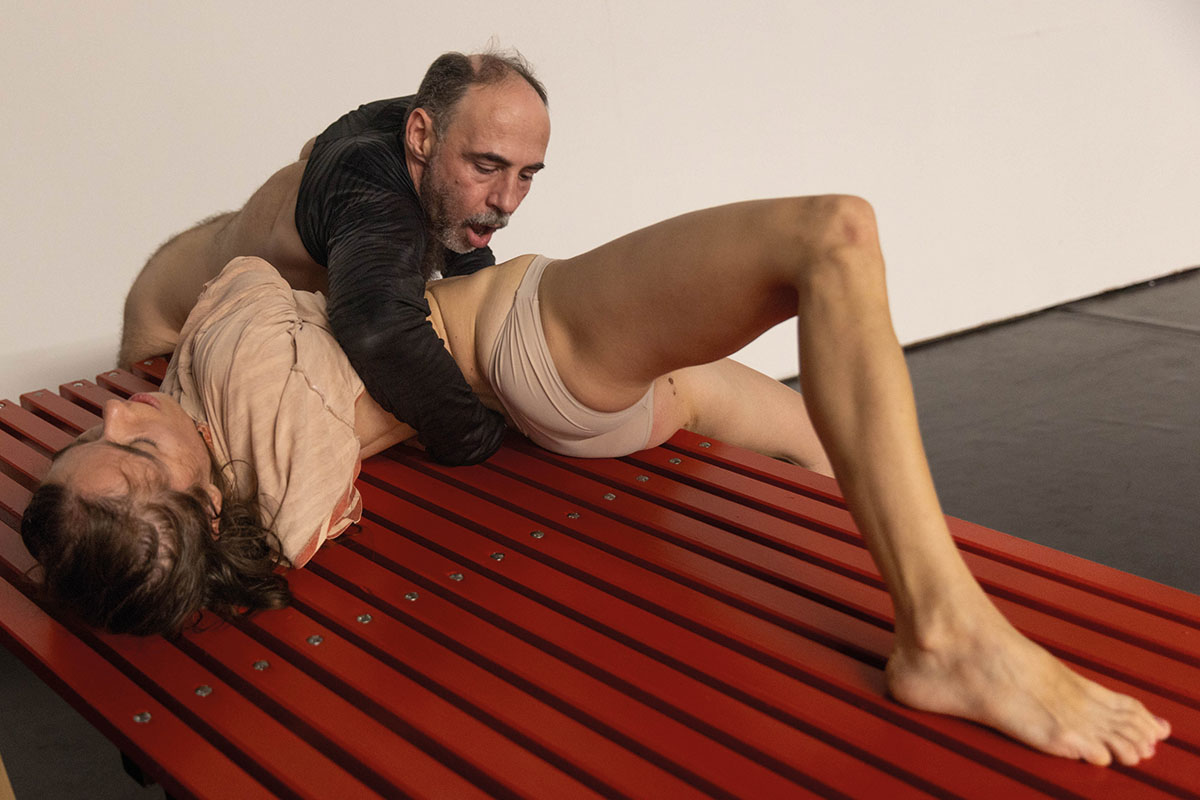
And this happened because I got a bit annoyed by how visual dance had become. So I went a little bit in another direction: to be close to people, close to the audience.
It was clear to me that I only wanted to work with dancers or actors I had already worked with before. Not somebody new to the process. People I know, people who know me, so they’re already familiar with the work and with each other. We did a lot before we actually rehearsed. We talked a lot. Because when you work with the audience, you can’t really rehearse it. You have to act it out, you have to experience it.
We looked for principles, our choreographic principles, and repeated those, talked about them, developed a bit of material, and then discussed what could happen when we’re with the audience.
So would you say that you developed some kind of rules? Like an internal structure or methodology. How do you approach the situation?
Yes, exactly. And out of this polymono, which was about imagining that you have multiple relationships with different people at the same time, how would that feel? Out of that came Jealousy.
In the literature on consensual non-monogamy, jealousy always has a big chapter. It’s the most discussed aspect. Our message in Jealousy is not “there should not be.” The basis is: there is always a little bit of it in all kinds of relationships, and let’s work with it. And with this inclusion of the audience, it means: let’s experience it together,
Of course, the audience doesn’t literally experience jealousy in ninety minutes, but they experience some triggers, some sparks. What we do is rather abstract—it’s not that we are representing certain kinds of jealousy. But we talked about what it is, how it feels, what you do, and how you act in these kinds of situations. And from that, we developed our choreographic principles. Then, as an audience member, you feel as if you are part of a choreography that expands over the whole space. And in this choreography, you experience certain things, you might even be reminded of your own past or life situation.
How many of your projects are connected to autobiographical themes? Do you work with your own experiences, or do the ideas come more from outside interests?
Jealousy didn’t start autobiographically. But there are other pieces before that. For example, Maybe the way you made love twenty years ago is the answer (2018). There, I talked in fragments about myself, but also about society, media, associations, and reflections, so it was a mix.
In Affair (2019), I took a text of mine that I had written in the early ’90s. We performed this text, four performers speaking it together. We treated it as a kind of document. There were words I didn’t even understand anymore, because it was such a long time ago, and I didn’t know what I meant back then. But we treated it as something we found, like an artifact. We found this text like a conversation, even though it was written by one person.
Maybe there are more, but now I would say the autobiographical aspect is getting less and less. It’s more in the background.

And when we talked about these triggers, I also want to touch on the physical aspects of performance. How do you decide on costumes? Is it true that costume needs to work for you, not against? How do you approach that part?
For almost 20 years now, I’ve been working with a costume designer, Dorothea Nicolai. She’s also part of the newest performance. Normally, we start by talking about conceptual ideas, and then we come to a conclusion that fits both of us. The process of finding the right things depends a bit on whether the project is more structural (in terms of movement) or more figurative.
If it’s more about figures, then she’ll dress the characters accordingly. For example, in the DeSacre! (2013) performance with Pussy Riots. Their outfits are colorful, of course, but Dorothea chose to highlight the balaclavas, and the rest stayed neutral. The piece puts scenes of Pussy Riot and of Le sacre du printemps by Nijinsky next to each other, and by putting the balaclavas on in the Pussy Riot scenes it was a clever trick to manage without a costume change.
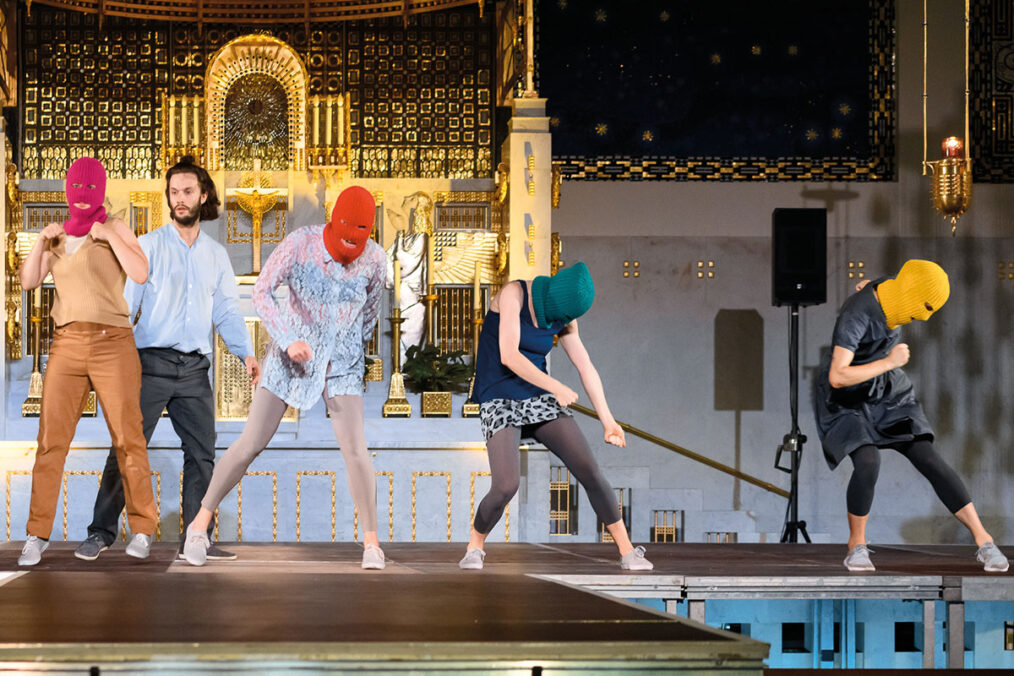
So could you say that the costume also sometimes serves as a bridge between you and the audience? As well as between one performer and another, in contact?
Yes! For polymono Dorothea’s idea was to use the clothing not properly (not in a traditional way) but also to communicate with the audience. In polymono, touch is the main thing: touching each other, touching the audience. But also having interesting materials that carry a tactile quality.
Tell us what your platform 2nd Nature (Second Nature) means.
I founded this label, I call it a label, thirty-five years ago or so. And at that time, I saw it as a term for something that you acquire that becomes your second nature. On the other hand, in dance, there’s always something to acquire, but also something to unlearn. So you have to have it in two different directions. And now, I have to say that with all the climate change problems. Second Nature feels very relevant.
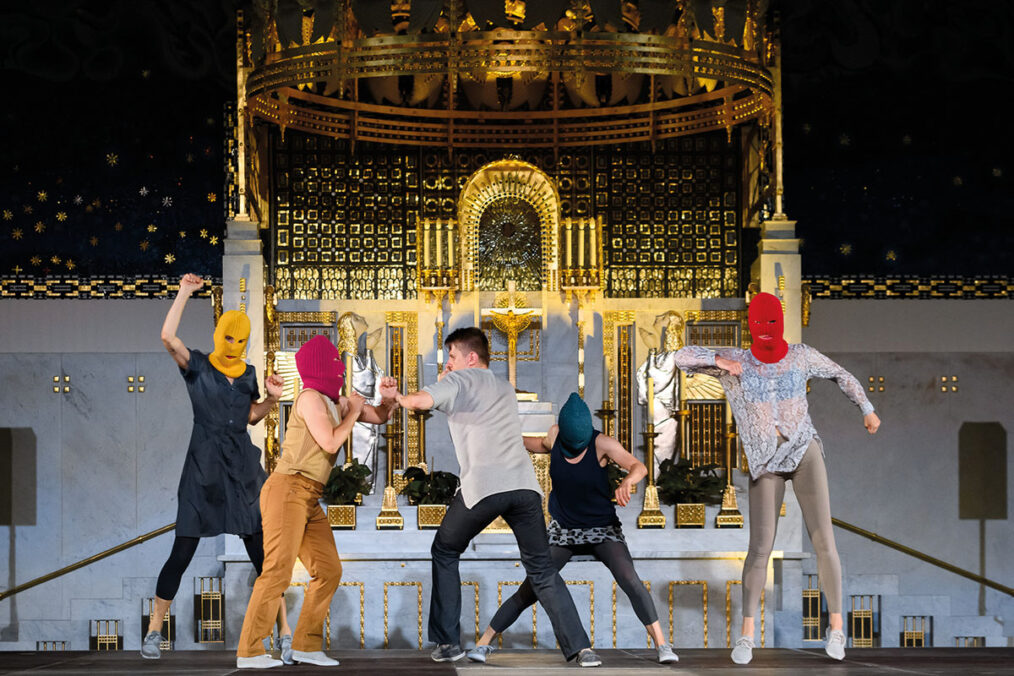
When I go through your body of work, the titles are really present and often poetic. Does the title give a limitation to the piece, because the word jealousy, for example, is already communicated before people even see the work? On one side, the title gives meaning, but on the other side, it also loosens it, am I right?
Some of my pieces have one-word titles, others have longer sentences. I think the title is a key, a way to be in the performance. If you have this title, then you know, for example, Jealousy it’s not about something else. You don’t have to figure out what it is, the performance. There’s already a kind of preset, so to say, the audience has a pre-expectation, or a frame.
You’re not only a choreographer but also an author. You said at the beginning that performing is a bodily experience, a body-work, but what about the writing? That’s such a different kind of work.
No, I would combine it! When thinking of my thirty-five years of work, I would say that in the very beginning, I had performances where people or dancers also talked. Not much, but for me, it was strange that they had nothing to say. So there were little fragments of text.
Then I got into a phase that I called structural choreography, where I cooperated with composers of new music. That was for more than ten years. In that phase, the main thing was the unity of movement and sound. It was never that sound was a background for movement or the other way around; it was always developed together. Mostly based on repetition, loops, forwards, backwards, and mirrored iterations. And during that phase, there was no text at all.
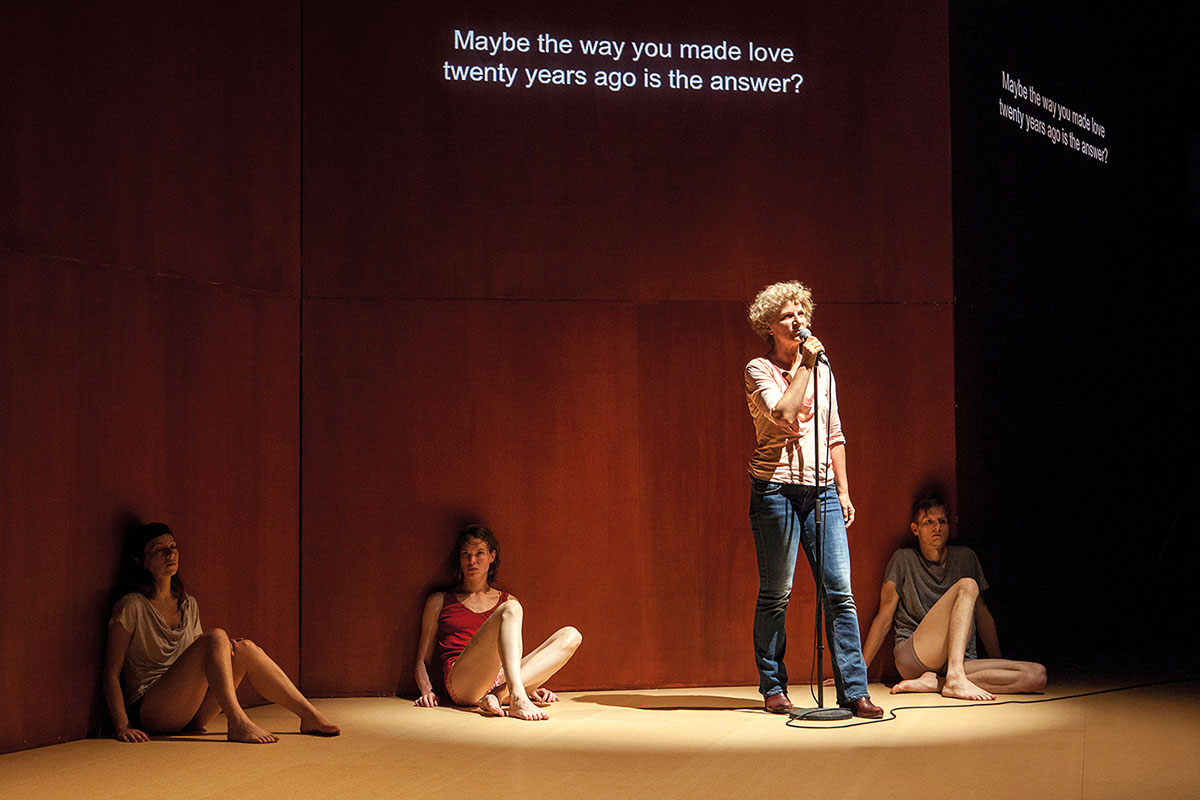
Then I had a kind of twist again in my working philosophy, and I started what I call “performance essays.” That means there is text again. The text has a certain rhythm, a pulse, moments where you are fast or intense.. So there’s this layer of reflection through my texts, and in contrast, there’s the physical and emotional choreography. I did that for quite a long time.
Now, I have to say, I’m going away from text again. There’s still some, but it doesn’t have such a big part anymore. I’m moving more toward a pure performative experience, focusing on the live moment rather than the pre-structured narrative.
Let’s talk about the part of the performance that is nudity. Is that something we should expect in Jealousy? A lot—or a little bit? And what is your relationship to nudity, personally and as a choreographer?
In Jealousy, it’s not that much—but there will be a little bit of it. The funny thing is that my very first piece, a short piece with two female performers in 1991, starts with nudity. Then we get a little dressed and go into the audience. So the elements that I use now, like in polymono were already there in my very first piece. Then I went in other directions; I wouldn’t say I lost it, but I explored different things. I
In Maybe the way you made love twenty years ago is the answer (2018), I started again with nudity. In that piece, it’s not the whole time, but it is there.
I have to say that for some topics, and most of the pieces I’ve done in the last ten years deal with aspects of sexuality in society, so nudity is a natural part of it. For me, a nude body has a certain vulnerability by nature. There’s something about that vulnerability that touches me.
And since we are in performance, we can use this as a feature of the vulnerability and the exposure. It’s like, in theater, when you strip down everything, you reach a different kind of truth. With nudity, you’re stripped bare of anything external, and I like to use that.
I feel that even though you’ve collaborated with many people, there’s also this strong sense of individualism in your work. How complicated is it to get into your collaborator circle?
It changes over the years. There’s always a core group for a few years, then people move on, and the work evolves. To be honest, a lot happens by chance, by occasion, and by coincidence. I don’t really audition, except when I need a large cast. Then I do auditions. Otherwise, for smaller pieces, it’s about relationships; if I have a good connection with the performers, that’s what matters. Then I can build on that trust.
And when it comes to working, do you have a studio?
When I work with performers, we rent studios around the city, sometimes Tanzquartier, now we are in Dschungel, sometimes studios of other companies. The writing, preparation, and conceptual work I do at home. It’s always a back-and-forth. We only come to the actual location about a week before the premiere. That’s usual—it’s very rare to have it longer.
And how about the location of the performance Jealousy?
Normally, I co-produce with institutions like Tanzquartier, ImPulsTanz, or Sophiensaele, so there’s always an infrastructure. But for Jealousy, it didn’t work out that way, so we started to look around the city for temporary spaces. There’s an agency in Vienna that manages such locations, and that’s how we found Funkhaus, which is definitely a cool location.
Performance: Jealousy by Christine Gaigg / 2nd Nature
Performance dates: 27/ 28 /29 November 2025 at 19:30h
Venue: Funkhaus Wien, Argentnierstraße 30A, 1040 Vienna
Information and Tickets: www.2ndnature.at
Performance Jealousy with: Manuela Deac, Samuel Feldhandler, Christine Gaigg, Anna Prokopová, Juliane Werner, Frank Willens | Room and Light: Philipp Harnoncourt
Sound design and Music: Peter Plessas | Costume: Dorothea Nicolai | Dramaturgical consultation: Wolfgang Reiter | Tontechnik: Niklas Esterbauer | Production: Lisa Ertl | PR: Eva Trötzmüller / art:phalanx | Graphic: Martina Gaigg
Christine Gaigg, choreographer and founder of the artistic collective 2nd Nature, has been developing experimental performance work since 1994, moving the borders of contemporary dance, new music, theatre, and film. www.2ndnature.at



